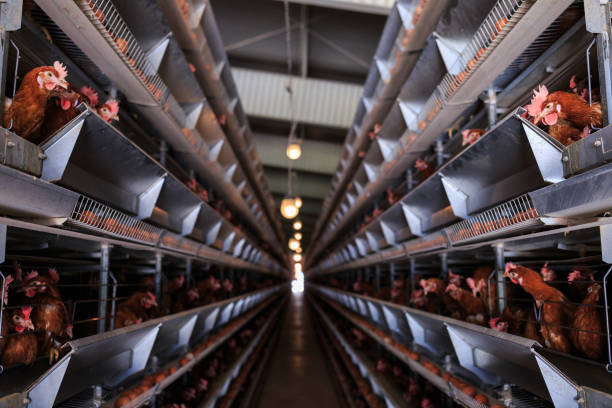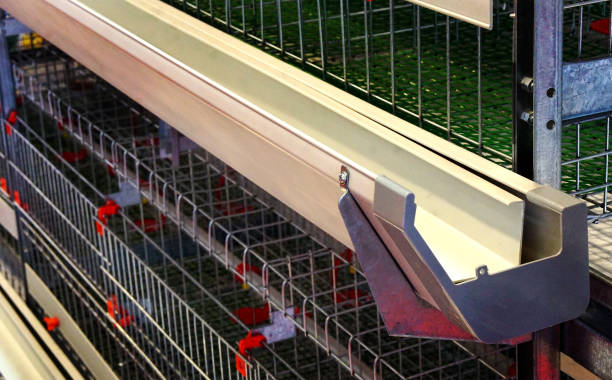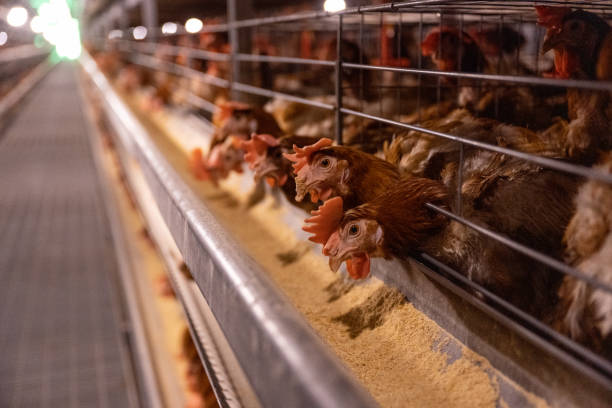
Indonesia Poultry Project: Optimizing Cage Design for 50,000 Birds
Indonesia Poultry Project: Optimizing Cage Design for 50,000 Birds

Indonesia, a vibrant archipelago nation, boasts a thriving poultry industry. Meeting the growing demand for chicken and eggs requires efficient and scalable farming practices. A poultry project of considerable size, housing 50,000 birds, presents both opportunities and challenges. One of the key factors determining the project’s success is the design of the cage system. Optimizing this design can significantly impact bird welfare, productivity, and overall profitability. This article delves into the critical considerations for cage design optimization in an Indonesian poultry project housing 50,000 birds.
Understanding the Indonesian Poultry Landscape
Before diving into the specifics of cage design, it’s crucial to acknowledge the unique aspects of the Indonesian poultry environment. Firstly, the climate is predominantly tropical, characterized by high temperatures and humidity levels. This necessitates cage designs that promote adequate ventilation and minimize heat stress for the birds. Secondly, Indonesian regulations and consumer preferences regarding animal welfare are evolving. Sustainable and humane farming practices are increasingly important. Thirdly, the availability and cost of labor, feed, and electricity must be taken into account when choosing a cage system.
Cage System Options: Layer vs. Broiler Considerations
The first pivotal decision revolves around the type of birds being reared – layers (for egg production) or broilers (for meat production). This choice dictates the fundamental design and features of the cage system.
Layer Cages: The primary goal with layer cages is to maximize egg production while ensuring the health and well-being of the hens. Key design considerations include:
Space Allocation: Providing adequate space per bird is paramount. Overcrowding leads to stress, increased disease susceptibility, and reduced egg production. Indonesian regulations likely stipulate minimum space requirements per bird, which must be strictly adhered to. The breed of hen also influences space needs, with larger breeds requiring more room.
Cage Dimensions: Cage height, width, and depth impact movement and access to resources. Sufficient height allows hens to stand and stretch comfortably. Cage width should accommodate natural behaviors such as wing flapping. Cage depth should enable easy access to feed and water.
Egg Collection System: Efficient egg collection minimizes breakage and labor costs. Options range from manual collection to automated systems. Automated systems, while initially more expensive, may offer significant long-term savings in large-scale operations.
Manure Management: Effective manure removal is essential for hygiene and odor control. Manure buildup can create an environment conducive to disease transmission. Options include manual scraping, belt systems, and deep litter systems.
Ventilation: Layer cages must be designed to facilitate optimal airflow. This is particularly important in Indonesia’s hot and humid climate. Proper ventilation helps to remove heat, moisture, and ammonia, improving air quality and reducing the risk of respiratory diseases. Natural ventilation can be supplemented with fans and cooling systems.
Feeding and Watering Systems: Ensure adequate access to fresh feed and water for all birds. Nipple drinkers are a common and hygienic option. Feeders should be designed to minimize feed wastage.

Material and Construction: The cage material should be durable, corrosion-resistant, and easy to clean. Galvanized steel is a popular choice due to its strength and longevity. The cage construction should minimize sharp edges and potential injury hazards.
Broiler Cages: Broiler cages prioritize rapid growth and efficient meat production. Key design considerations include:
Floor Space: Broilers require adequate floor space to move around and access feed and water. Overcrowding can lead to stress, leg problems, and reduced growth rates.
Cage Height: Sufficient cage height is necessary to accommodate broilers as they grow to their market weight.
Ventilation: Ventilation is crucial for maintaining a comfortable environment and preventing heat stress, which can significantly impact broiler growth and mortality.
Feeding and Watering Systems: Broiler cages require systems that provide ample feed and water access for rapid growth.
Manure Management: Efficient manure removal is essential for maintaining hygiene and reducing the risk of disease.
Ease of Access: The cage design should allow for easy access to birds for inspection and harvesting.
Optimizing Cage Design for 50,000 Birds: Practical Considerations
Scaling up a poultry operation to house 50,000 birds requires a strategic approach to cage design. The following practical considerations are essential:
Building Layout: The layout of the poultry house should maximize space utilization and facilitate efficient workflow. Consider factors such as access to feed and water, manure removal, and egg collection (for layers).
Tiered Systems: Tiered cage systems can significantly increase bird density within a given floor area. However, it’s crucial to ensure adequate ventilation and lighting throughout all tiers.
Automation: Automation can reduce labor costs and improve efficiency. Consider automating tasks such as egg collection, feeding, watering, and manure removal.
Climate Control: Implementing climate control systems, such as fans, evaporative coolers, and fogging systems, is critical in Indonesia’s tropical climate. These systems help to maintain a consistent temperature and humidity level within the poultry house, minimizing heat stress and maximizing bird performance.
Lighting: Proper lighting is essential for stimulating egg production in layers and promoting growth in broilers. Consider using LED lighting, which is energy-efficient and provides a consistent light output.
Biosecurity: Implement strict biosecurity measures to prevent the introduction and spread of diseases. This includes controlling access to the poultry house, disinfecting equipment, and implementing a robust vaccination program.

Waste Management: Develop a comprehensive waste management plan to minimize environmental impact and comply with local regulations. This plan should include strategies for manure storage, processing, and disposal.
Local Materials and Labor: Utilize locally sourced materials and labor whenever possible to reduce costs and support the local economy.
Cage Design and Bird Welfare
Ethical considerations surrounding animal welfare are increasingly important. Cage designs that promote bird welfare are not only morally responsible but can also lead to improved productivity.
Enrichment: Consider incorporating enrichment features into the cage design, such as perches, dust baths, and pecking objects. These features can help to reduce boredom and stress, improving bird well-being. While enrichment is more commonly associated with cage-free systems, elements can be adapted to cage environments.
Minimizing Injuries: Ensure that the cage design minimizes the risk of injuries. Avoid sharp edges and protruding wires. Regularly inspect cages for damage and repair any deficiencies promptly.
Proper Ventilation: Adequate ventilation is crucial for bird welfare, as it helps to maintain a comfortable environment and prevent the buildup of harmful gases.
Working with a Poultry Equipment Supplier
Choosing the right poultry equipment supplier is a critical step in optimizing cage design for a 50,000-bird operation. Look for a supplier with:
Experience: A proven track record of providing high-quality cage systems for large-scale poultry operations.
Expertise: Deep understanding of the Indonesian poultry industry and its specific challenges.
Customization: The ability to customize cage designs to meet the specific needs of your project.
Support: Comprehensive after-sales support, including installation, maintenance, and training.
Compliance: Adherence to relevant Indonesian regulations and international standards.
Conclusion
Optimizing cage design for a 50,000-bird poultry project in Indonesia requires careful consideration of local conditions, bird type (layer or broiler), space allocation, ventilation, manure management, biosecurity, and animal welfare. By working with a reputable poultry equipment supplier and prioritizing these factors, poultry farmers can create a productive and sustainable operation that meets the growing demand for chicken and eggs in Indonesia. The initial investment in optimized cage design will yield long-term benefits in terms of increased productivity, reduced disease incidence, improved bird welfare, and enhanced profitability. Remember that adapting to evolving regulations and consumer preferences regarding animal welfare is a continuous process, and investing in sustainable and humane farming practices is vital for the long-term success of the Indonesian poultry industry.
